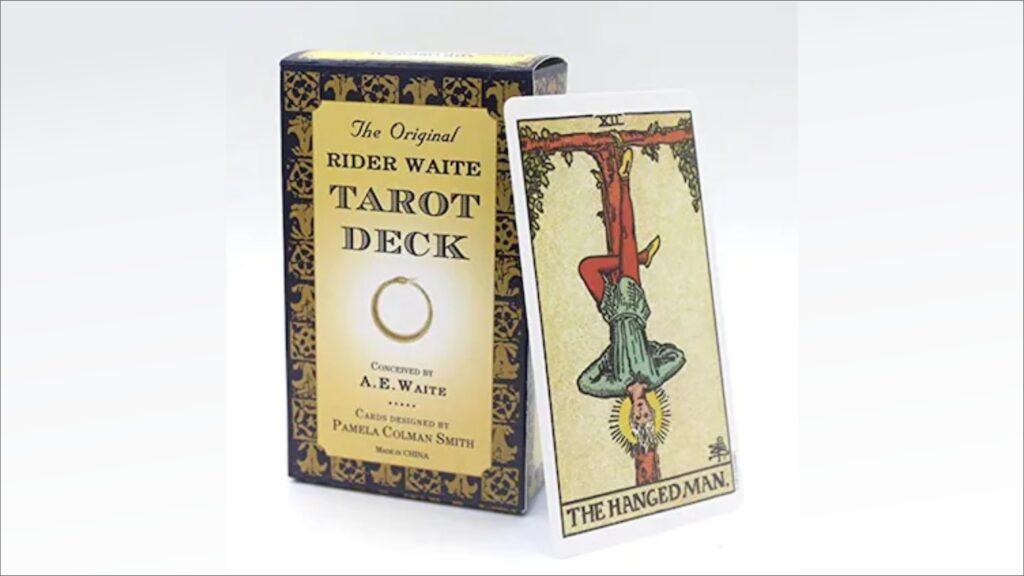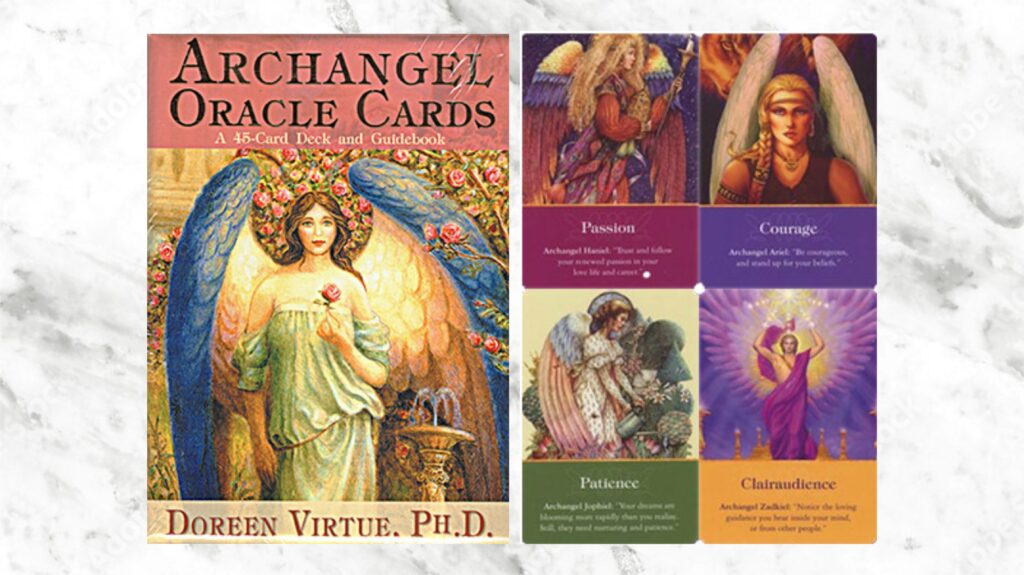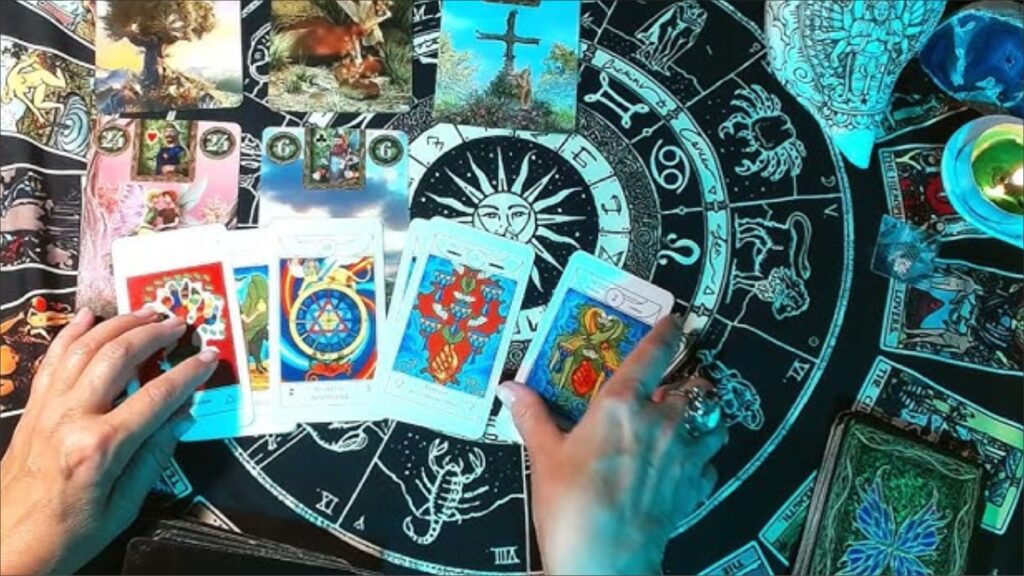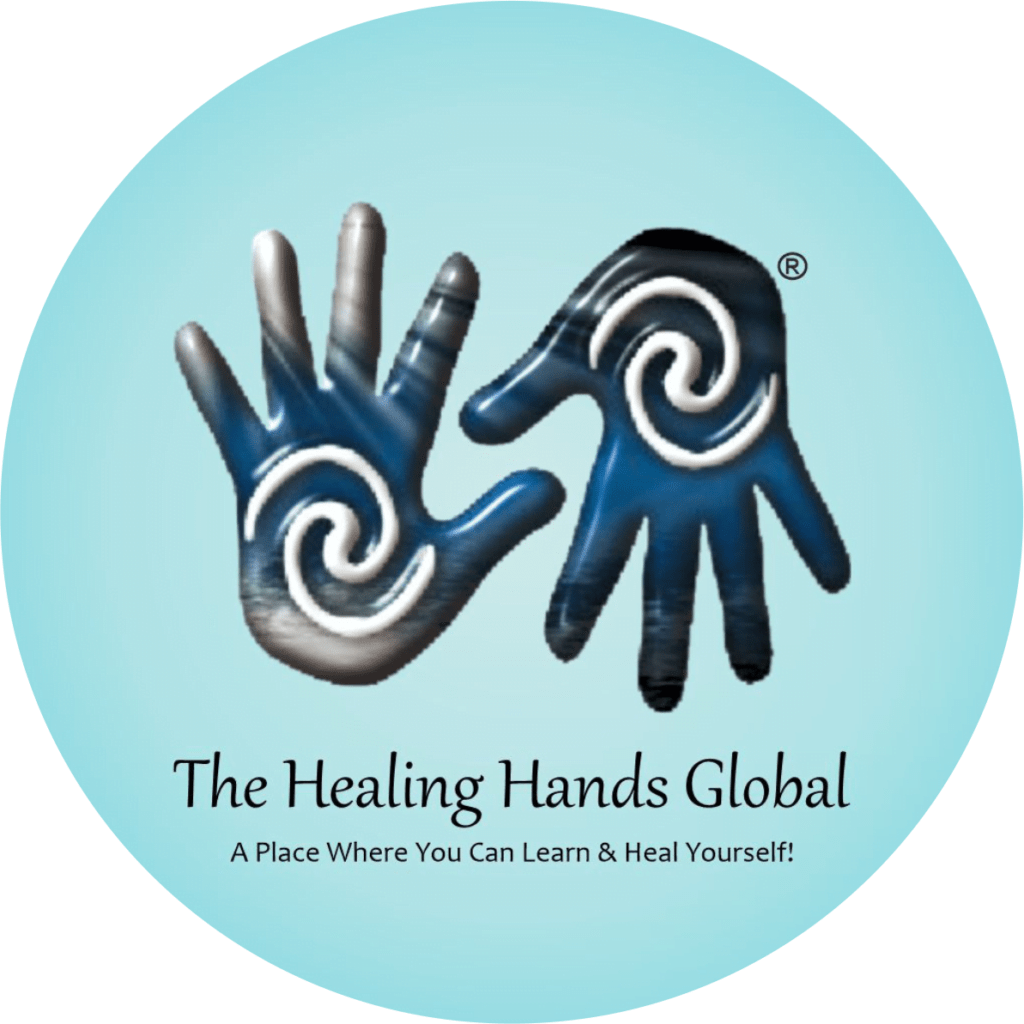Unlock your future with Tarot Cards—a captivating journey of self-discovery through rich symbolism and profound insights. Explore various card types, famous decks, and the origins of this ancient practice. Discover how Tarot can predict the future and empower you to improve your life.
Table of Contents
How Tarot Cards Works?
Understanding the mechanics of Tarot involves a fusion of intuition, symbolism, and interpretation. Here’s a breakdown of the key components:
Intuition: The Tarot reader’s intuition is paramount. It entails tapping into one’s inner wisdom and higher self to decipher the cards’ messages.
Symbolism: Each Tarot card is steeped in symbolic imagery representing various concepts, emotions, and situations. For instance, the Empress card might embody fertility, abundance, and nurturing energy.
Spread Layouts: Tarot spreads dictate how the cards are arranged in a reading.
Common spreads include the Celtic Cross, Three-Card Spread, and the Horseshoe Spread. The position of each card within the spread provides context and depth to the reading.
Questioning: The querent, the seeker of the reading, typically poses a specific question or seeks guidance on a particular aspect of their life. This question sets the intention for the reading.
Reversed Cards: When a Tarot card appears upside down, it adds nuance to the reading. It may indicate resistance, blocked energy, or a need for introspection. It encourages the reader to explore the situation from a different perspective

Origin and Predictive Power:
The origins of tarot cards can be traced back to ancient civilizations, with their roots deeply embedded in mysticism and divination practices. Tarot cards are believed to tap into the collective unconscious, providing glimpses into the past, present, and future. Through a combination of archetypal imagery and intuitive interpretation, tarot cards offer profound insights and guidance for those seeking clarity and direction in their lives.
Different cards in a deck :
A standard Tarot deck contains 78 cards. These cards are divided into two main groups
The Major Arcana: This group consists of 22 cards that represent significant life events, archetypes, and spiritual lessons. Some well-known cards in the Major Arcana include The Fool, The Lovers, The Death card, and The World.
The Minor Arcana: This group comprises 56 cards and is further divided into four suits (similar to playing cards): Wands, Cups, Swords, and Pentacles (or Coins).
Each suit has 14 cards, including 10 numbered cards (Ace through 10) and four Court cards (Page, Knight, Queen, and King).
So, to summaries, a standard Tarot deck contains 22 Major Arcana cards and 56 Minor Arcana cards, totaling 78 cards in all.
Understanding Upside-Down Tarot Cards:
When a tarot card appears upside down during a reading, it is known as a reversed or inverted card. This occurrence adds an extra layer of depth and complexity to the reading, suggesting that the energy of the card may be blocked or in need of further exploration.
Reversed cards often invite introspection and encourage individuals to consider alternative perspectives or approaches to the situation at hand.

Empowering Your Life with Tarot Cards:
Tarot cards have the potential to improve your life in numerous ways. They can serve as a tool for self-reflection, helping you gain a deeper understanding of your emotions, desires, and aspirations. Tarot readings can provide clarity during times of uncertainty, offering guidance and empowering you to make choices aligned with your highest good. By incorporating tarot into your daily routine, you can cultivate a stronger connection with your intuition and unlock your true potential.
Exploring the All-Time Popular Decks
Unravelling the Mysteries of Tarot Introduction: Tarot card reading has captivated people around the world for centuries. From the classic Rider-Waite deck to the mystical Angel Oracle deck, each popular deck offers a unique perspective into our lives. Let’s delve into the essence of these captivating decks, including the Renaissance Tarot card and the Egyptian Cartouche, and uncover the allure that attracts enthusiasts and novices alike.
1. The Rider-Waite Deck: The Rider-Waite Tarot, created by renowned mystic A.E. Waite and artist Pamela Colman Smith, has become the essential deck for beginners. Its intricate symbolism and vibrant imagery ushered in a new era by deviating from traditional decks. This timeless masterpiece allows for deep, intuitive exploration through its seventy-eight cards, making it a favorite among learners and seasoned readers alike.

- The Angel Oracle Deck: Delicate, gentle, and ethereal, the Angel Oracle deck is a divine tool for connecting with angelic These cards serve as vehicles of guidance, invoking celestial wisdom and providing comforting insights. Each card portrays angelic figures, unlocking realms of celestial assistance, love, and compassion. Whether seeking guidance in times of uncertainty or simply desiring divine messages, the Angel Oracle deck is a cherished gem within the tarot community.

3.Renaissance Tarot Card: The Renaissance Tarot deck is a treasure trove for art and history enthusiasts alike. Drawing inspiration from the beautiful works of art during the Renaissance period, this deck captivates with its unique portrayal of characters and symbolism. The vividly depicted archetypes, mythological figures, and historical elements evoke a sense of artistic grandeur, urging us to explore the interplay between our past and present.

4. Egyptian Cartouche: The Egyptian Cartouche deck beckons us to the mystical land of ancient Egypt, unveiling the wisdom of the pharaohs and the mysteries of the Nile. Rooted in ancient hieroglyphs and cultural symbolism, each card carries within it the essence of Egyptian cosmology and spiritual beliefs. Exploring this deck allows us to tap into the rich tapestry of Egyptian civilization, inviting us to contemplate the profound connections between the past and our present lives.

Predicting the Future: The Art of Tarot Readings
Tarot cards offer a unique lens through which we can glimpse into the future. Learning how to conduct Tarot readings empowers individuals to seek guidance and insights on their own life path, unravelling the mysteries that lie ahead.

Decoding the Language of Reversed Tarot Cards
In the world of Tarot, upside-down or reversed cards hold a distinct significance. Understanding how to interpret these cards adds nuance and depth to readings, providing a more comprehensive understanding of the messages they convey.
How you can read tarot cards on your own:
- Before you spread out the deck, start by meditating and connecting with your subconscious, to establish a connection with the
- Keep your questions simple and frame it in a way that it is easy to
- Now ask your question and shuffle your deck, while also meditating for the best suited card to come up
- . ● You can stop anytime when you feel you are ready and pull out a card. Sometimes when you are shuffling, cards fall out on their own too.
- The card might either come upright, or reversed, and they both have different meanings and
- Now that you have pulled a card, here comes the most important part – interpreting
Is Tarot Card Reading Haram?
The question of whether Tarot card reading is considered ‘haram’ largely depends on one’s religious beliefs and interpretation of religious texts. In Islam, opinions on practices like Tarot may vary among scholars. Some may view it as a form of divination or superstition, which can be perceived as conflicting with Islamic principles. Therefore, it’s crucial for individuals to
seek guidance from a knowledgeable religious authority or scholar who is well-versed in Islamic teachings.
Unlocking Insights with Tarot Cards
Tarot cards serve as a tool for introspection, offering insights into various aspects of life. Here are some potential benefits of Tarot card reading:
Clarity and Guidance: Tarot readings can provide clarity in times of confusion or uncertainty. They offer fresh perspectives on life’s challenges and help individuals make informed decisions.
Personal Growth and Development: Tarot cards encourage self-refection and introspection. They can lead to a deeper understanding of one’s strengths, weaknesses, and potential areas for growth.
Navigating Relationships: Tarot readings can shed light on the dynamics of personal and professional relationships. They offer insights into communication, trust, and potential areas for improvement.
Empowerment: Tarot readings can empower individuals to take control of their lives.
They provide a sense of agency and encourage proactive decision-making.
Stress Reduction: Engaging with Tarot cards in a mindful and focused manner can be a meditative practice. It promotes relaxation and can help alleviate stress
Using Tarot Responsibly
While Tarot can offer valuable insights, it’s essential to approach it with a balanced perspective. Here are some tips for using Tarot responsibly:
Seek Professional Guidance: If you have serious concerns or face significant life decisions, consult with qualified professionals in the relevant fields (e.g., legal, financial, medical).
Remember Free Will: Tarot readings offer guidance, but they don’t dictate your future.
Ultimately, you have the power to shape your own path.
Respect Cultural and Religious Beliefs: Understand that beliefs about Tarot can vary widely. Respect the perspectives of others, especially if they hold different views.
In the tapestry of life, Tarot cards serve as threads of insight, weaving a narrative of guidance and self-discovery. While interpretations may vary, the potential benefits of Tarot are undeniable. By approaching this ancient practice with respect, mindfulness, and a willingness to learn, individuals can unlock a wealth of wisdom to navigate life’s twists and turns.
As you embark on your own Tarot journey, remember to cherish the diversity of perspectives and embrace the empowerment that this ancient practice can offer. Your path forward may just be illuminated by the timeless wisdom of Tarot


